Adiantum is a popular houseplant, which is one of the species of a large genus of ferns. Highly decorative plant mesmerizes with delicate and delicate greenery. As a potted culture, the most commonly grown is a subspecies known as “venereal hair”.
Material Content:
Description and nuances of growing
In the wild, the plant is found in the mountainous regions of the Caucasus, Crimea, as well as in Central Asia on moist limestones near water bodies. The name fern is obliged to tender, light green leaves, reminiscent of weightless hair, female curls, on elongated cuttings. Legends connect the origin with the goddess Venus. Soruses shine through on the refined leaf blades. Thin rhizome is covered with scales of black color. Plant height can reach 70 cm.
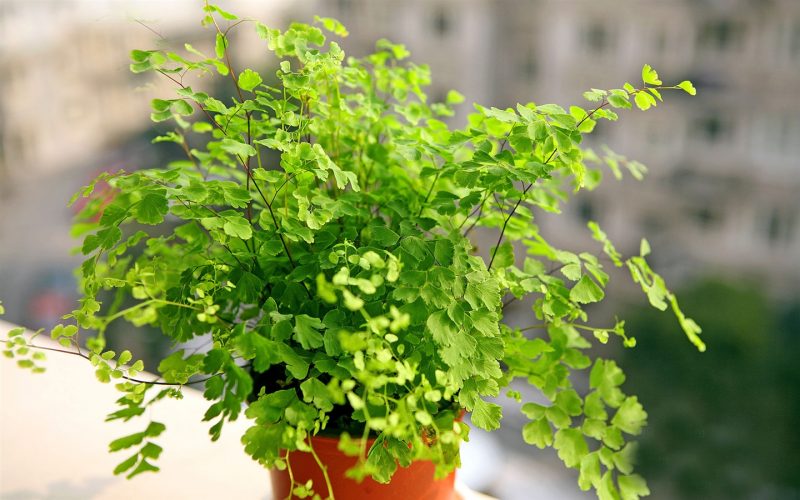
When cultivating ferns in a pot, it is necessary to take into account a number of features of an exotic plant:
- intolerance to bright light;
- the need for moist and fertile soil;
- exactingness to temperature conditions;
- love of cramped pots.
Home Care
In order for the original plant, creating an atmosphere of comfort and complete harmony, to develop well and delight the florist with delicate greenery, comprehensive care of the fern should be carried out.
Soil requirements
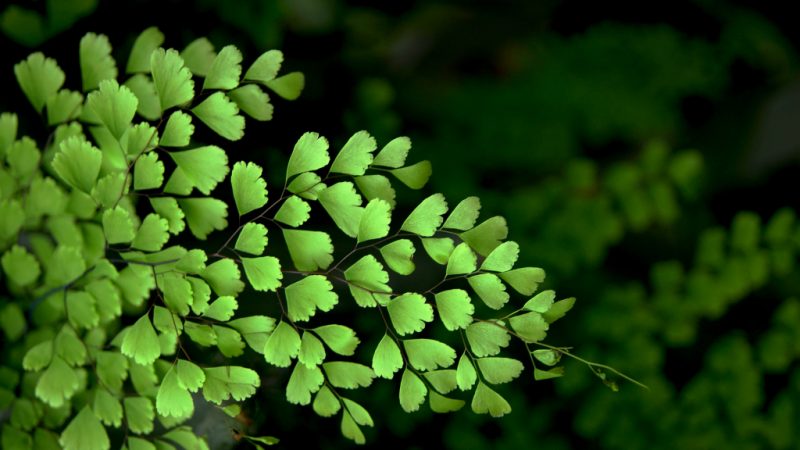
All types of adiantum, not excluding the “Venus of hair”, need a loose, fertile soil with an acid reaction.A soil mixture with similar indicators is prepared from peat and sand, which are taken in a ratio of 2: 1. Before use, the substrate is baked for about 20 minutes in the oven for disinfection.
Lighting and location
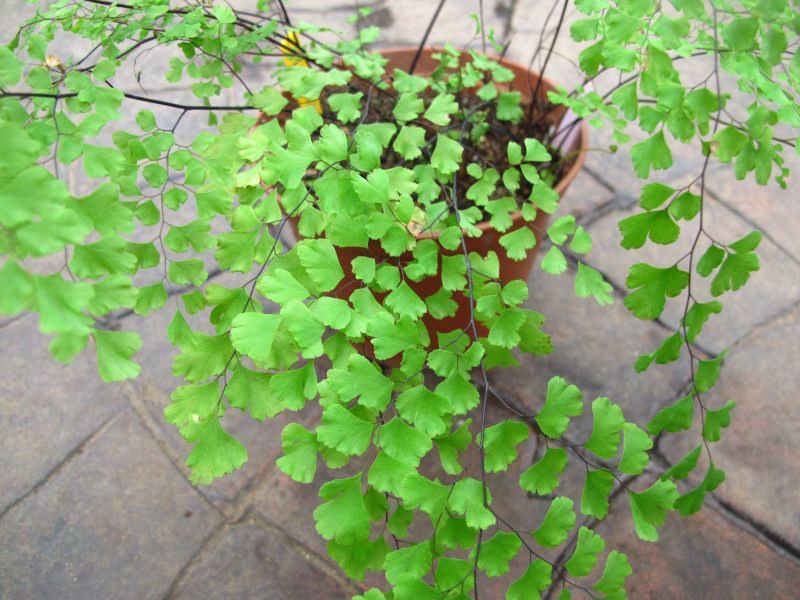
In natural conditions, the fern selects shaded areas, therefore, and at home, you should not place a flower pot in bright sun, which can lead to the death of leaf plates. The optimal place for an openwork plant will be the windowsills of the north or east windows that do not open for ventilation. Venus of hair needs fresh air, but does not tolerate drafts. With a place for the pot you need to decide immediately: the plant does not like a change of location.
Read also:indoor fern: home care
Temperature mode
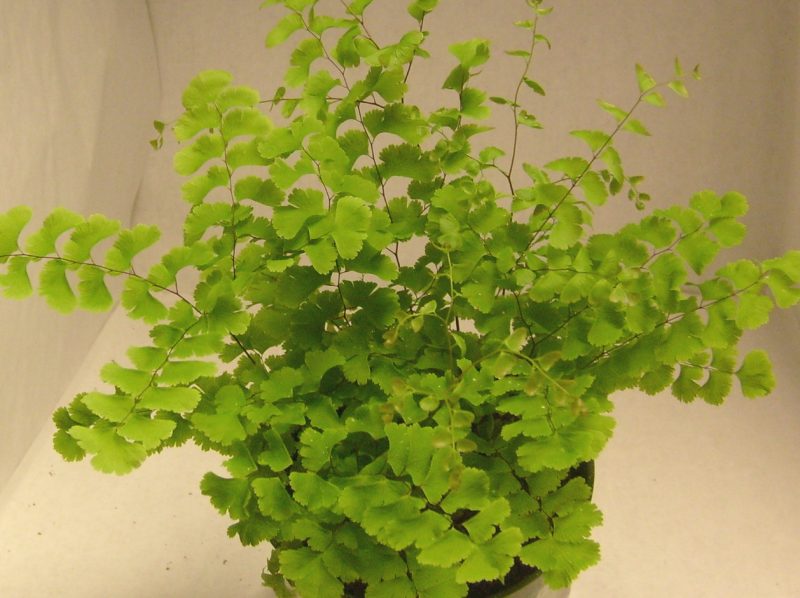
Venus of hair is quite demanding on temperatures and does not react badly to an increase in thermometer values in the spring-summer period above the mark of 22 ° C. In winter, the fern should be kept in a cool place with a temperature of 15 ° C.
It is interesting:care for bougainvillea at home
Watering and spraying
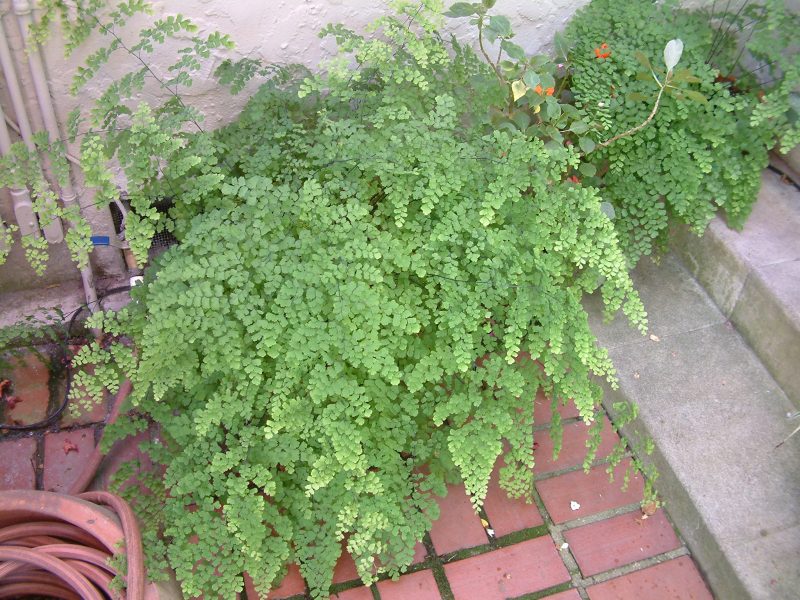
Flower venereum hair does not tolerate the drying out of an earthen coma, which causes yellowing and dropping wai. However, too frequent watering, accompanied by stagnation of water in the roots, is also detrimental to the plant due to the development of gray rot. To balance the irrigation regime, it is necessary to carry out lower watering by placing the pot in a bowl of water. After the topsoil is completely saturated with moisture, the flower is rearranged in the sink to drain excess fluid. In winter, the frequency of procedures is halved. Adiantum loves humid air and needs daily spraying in the hot season.
Attention! Water procedures are carried out with settled or filtered water.
Fertilizing and fertilizers
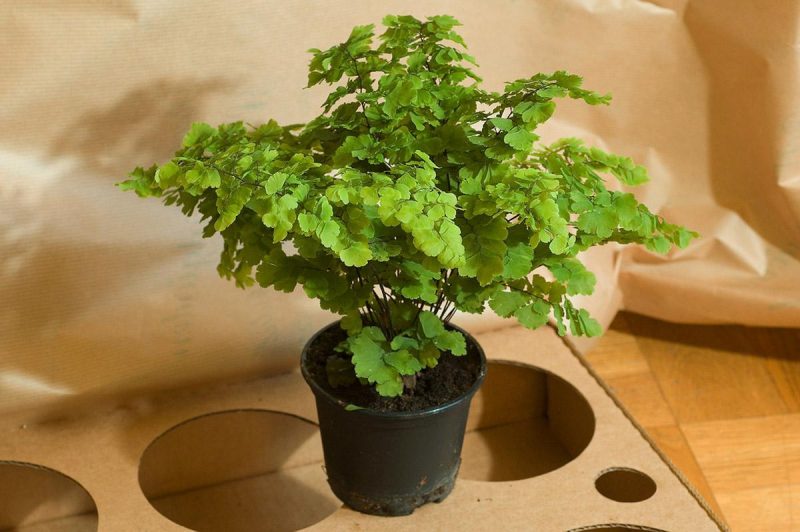
Fern is fertilized every three weeks from mid-spring until autumn, when top dressing is reduced. In winter, fern does not need additional nutrition at all. As fertilizers, liquid mineral complexes should be used in half the dose from the manufacturer's packaging.
Pruning
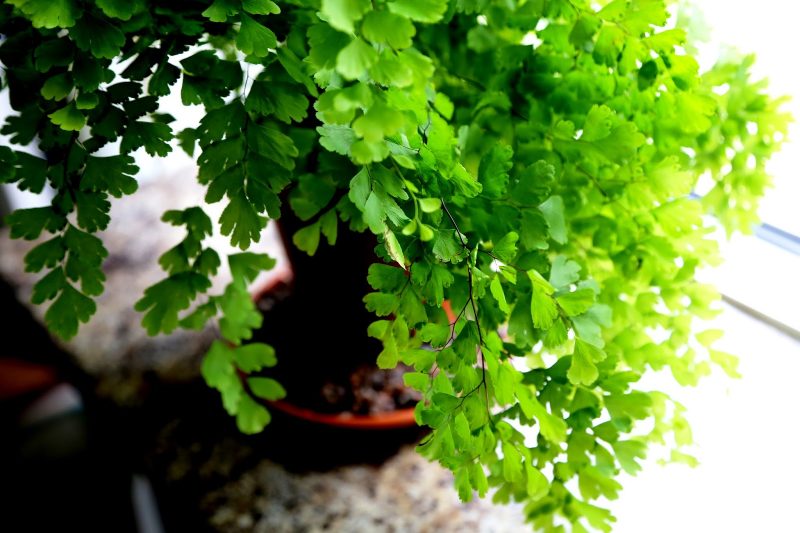
With the advent of spring, pruning of yellowed and aged wai should be carried out in order to maintain decorativeness and direct all the vitality of the plant to the formation of new leaves.
How to transplant a plant
Since a houseplant is characterized by a slow pace of development and a love of cramped dishes, transplantation should not be carried out more often than 1 time in 2 years. The signal to the procedure is the fern roots shown from the drainage holes.
Spring transplant is carried out as follows:
- A wide pot is taken, on the bottom of which a drainage layer of broken brick or gravel is placed.
- The drainage is slightly covered by a loose substrate, onto which the venus of hair is transferred.
- The voids are carefully filled with the soil mixture, after which the soil is slightly compacted and moistened.
Adiantum fern propagation
Venus of hair is propagated by spores and division of the bush.
Spore propagation

With this method:
- A shallow container is prepared, which is filled with a previously decontaminated soil mixture of peat, sand and a small amount of sheet soil.
- Spores are soaked for disinfection in a pink solution of manganese.
- The substrate is moistened, and spores are distributed on its surface.
- Crops are covered with glass and moved to a shaded, warm room.
- When shoots appear, which is noted after 1-12 weeks, the glass is removed.
- The box is transferred to a bright place without bright sunlight.
- After the seedlings get stronger, they dive in several pieces into separate pots filled with peat.
Advice! In order to accelerate germination, lower heating should be arranged in crops within 21 ° C.
Bush division
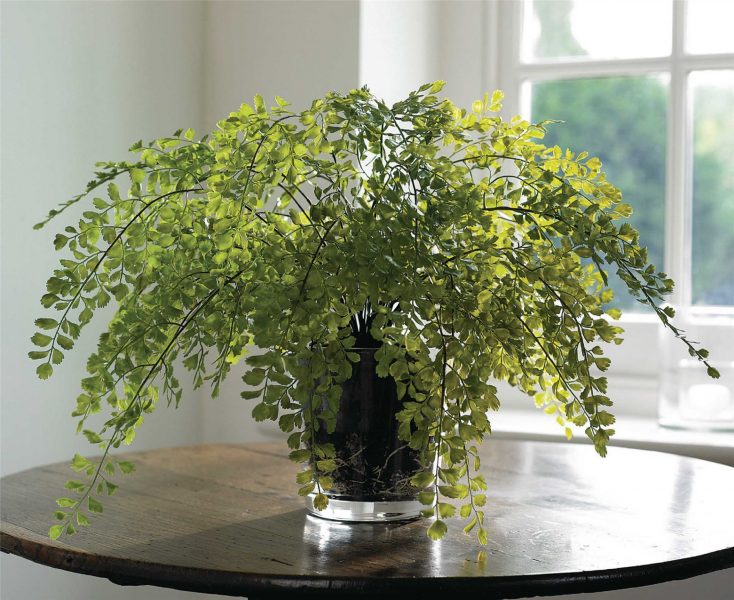
During the transplant, a procedure is carried out in which the root is cleaned of soil residues and divided into parts using a sharp, sterile instrument. Each split must have several growth buds. Injured places are sprinkled with crushed or charcoal. Delenki are planted in separate pots so that the root neck is flush with the ground level, so that decay does not begin.
Attention! A fern with an injured root system takes root for a long time, so you should not wait for a quick start to intensive vegetation.
Plant diseases and pests
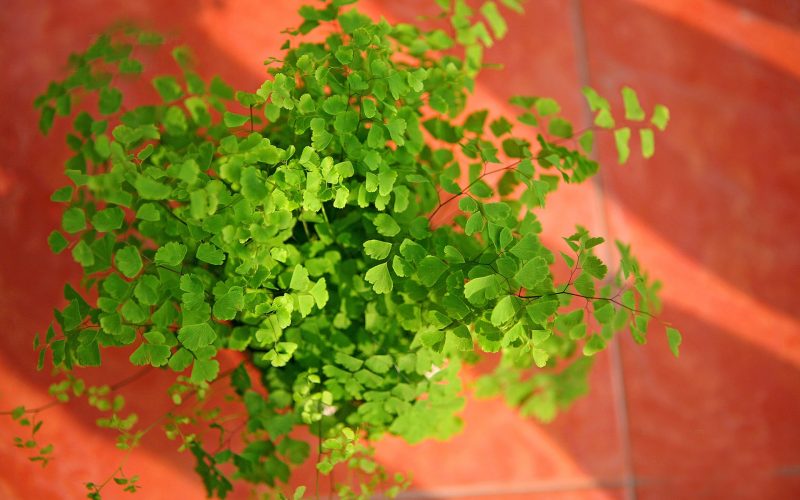
Due to the content of the enzyme adiantum Venus, the hair is rarely affected by pests in leaf blades of the repellent insect. Sometimes on the shoots of an ornamental plant, aphids, scabies, spider mites and mealybugs can be noted. So that insects do not cause much damage to the beauty of the flower, it is necessary at the first signs of the vital activity of one or more harmful organisms to spray the fern with an insecticidal preparation according to the instructions indicated on the package. Disease venerein hair is not affected.
The main problems when growing
The popular indoor flower is famous for its unpretentiousness.
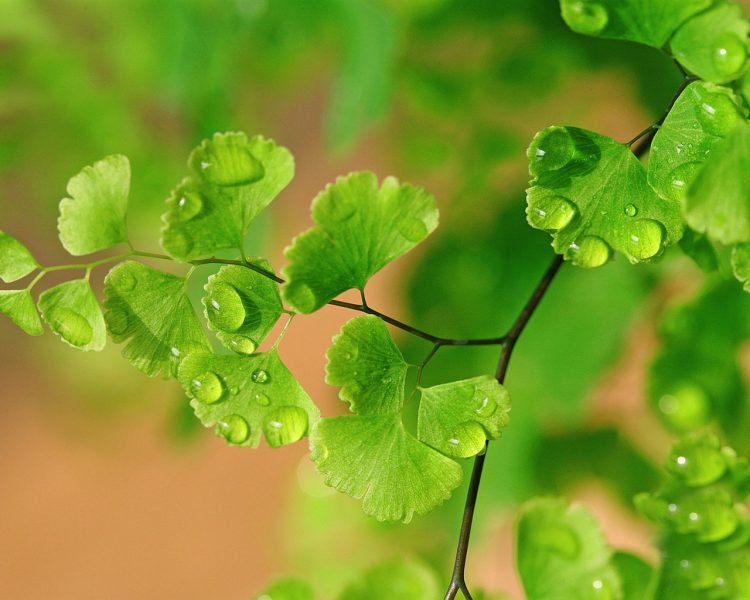
However, the abuse of the non-capricious nature of the plant leads to a number of problems associated with the violation of the rules for the cultivation of adiantum:
- The leaves dry, becoming brown at the edges - the situation is noted when drying an earthen coma or smoking next to a flower.
- Leaves fall - the reason lies in too dry air.
- Vayi turn pale - a sign of bright lighting.
- The sheets are twisted - evidence of hypothermia in conditions of high humidity.
Thus, the adiantum Venus hair, which is a very spectacular indoor culture, is quite undemanding, but needs care and attention from the grower.












